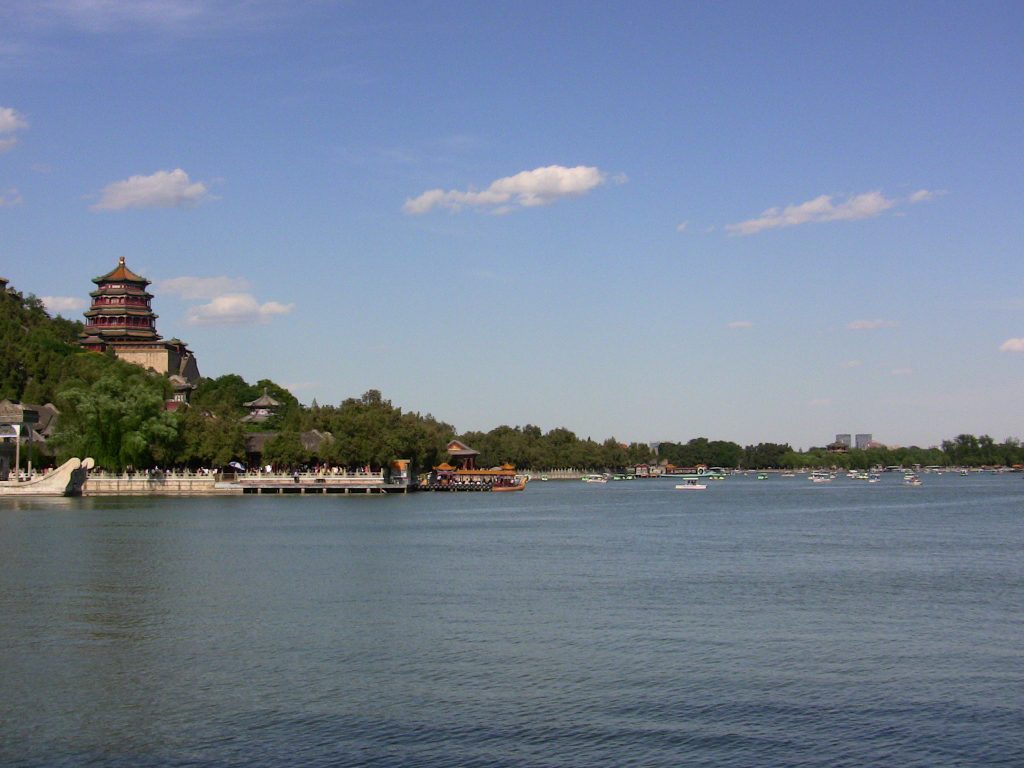Visiting Beijing’s Summer Palace Posted by sasha on Sep 16, 2020 in Culture
No visit to Beijing would be complete without a trip to the Summer Palace (颐和园 – yí hé yuán), a massive complex full of pagodas, gardens, palaces, and even a lake. In my 5 years of living in the Chinese capital, this was always my favorite place to visit, especially on rare clear day in Beijing. Today I’d like to share a bit with you about visiting Beijing’s Summer Palace, starting with a little history.
History of the Summer Palace
Back in 1750, this area was built up to serve as a place for the royal family to get some R&R in the hot summer months. In the beginning, during the reign of the Qianlong Emperor (乾隆帝 – qián lóng dì) of the Qing Dynasy, it was called the Garden of Clear Ripples (清漪园 – qīng yī yuán). It was constructed in accordance with the Chinese philosophy of balancing the works of man with nature – hence the massive lake and the seemingly endless greenery. The emperor actually had an army of 100,000 workers widen and deepen Kunming Lake (昆明湖 – kūn míng hú). In the bustling capital city, a little slice of peace, tranquility, and nature was created.
Learn more about the Summer Palace in this video from UNESCO.
Unfortunately, the Summer Palace suffered two major attacks in the past. The first came during the Second Opium War (第二次鸦片战争 – dì èr cì yā piàn zhàn zhēng), as Anglo-French forces ransacked and destroyed the place. It was rebuilt in 1886 and a few years later given its current name – which means “the garden of tranquil harmony” – and it served as a popular retreat for the Empress Dowager Cixi (慈禧太后 – cí xǐ tài hòu).
It wasn’t long before another attack happened, though, as foreign troops set fire to the place due to their anger over the anti-foreign Boxer Rebellion (义和团运动 – yì hé tuán yùn dòng) in 1900. It was restored once more and was made a public park in 1924. Fast forward to 1988, and the Summer Palace gained UNESCO World Heritage status, being described as “a masterpiece of Chinese landscape garden design.”
Best Time to Visit the Summer Palace
A visit to the Summer Palace is great any time of year, but it’s best in the fall when all of the leaves are changing colors and temperatures are a bit cooler. Regardless of when you visit, you can always have some fun on the lake – boating in the summer or walking on the ice in winter.
As the grounds are so sprawling and full of things to do, it’s best to budget an entire day. That way, you can leisurely stroll around and see just about everything it has to offer. I recommend bringing a picnic lunch for your visit to the Summer Palace. As with most tourist attractions in China, you’ll only find mediocre, overpriced food inside.
One of my first videos I ever made for the Transparent Chinese channel!
If you’re short on time, though, a half-day is just fine. Consider hitting the Summer Palace in the morning and then taking a bus or cab over to the Botanical Gardens (植物园 – zhí wù yuán). Click here for a more detailed look at these beautiful gardens. You could also easily visit Yuanmingyuan (圆明园 – yuán míng yuán), which is known as the “Old Summer Palace.”
Although blue-sky days are becoming increasingly rare in Beijing, it’s ideal to visit the Summer Palace on one such day – that way you’ll get great views of the city and the surrounding hills from atop the Tower of Buddhist Incense (佛香阁 – fú xiāng gé). It’s a pretty incredible sight with all of the modern skyscrapers off in the distance and the traditional Chinese architecture in the foreground.
Logistics
The Summer Palace is open year-round, from 7 AM-5 PM between November and March, and from 6:30 AM to 6 PM the rest of the year. A ticket is 20 RMB in the fall/winter months and 30 in the spring/summer.
Although you can buy a combination ticket for either 50 or 60 depending on the season, this is not really necessary. Chances are you won’t make it to all of the extra places during your visit, and frankly some of them just aren’t worth the price of admission. For an extra 10 kuai, you can climb to the top of the aforementioned tower, which is definitely worthwhile.
The best way to reach the Summer Palace is by taking Subway Line 4 to the Beigongmen station (北宫门站 – běi gōng mén zhàn). Go out of Exit D and walk for a few minutes to reach the North Gate.
你去过颐和园吗?你觉得怎么样?
nǐ qù guò yí hé yuán ma? nǐ jué dé zěn me yàng?
Have you been to the Summer Palace? What do you think of it?

Build vocabulary, practice pronunciation, and more with Transparent Language Online. Available anytime, anywhere, on any device.










Leave a comment: